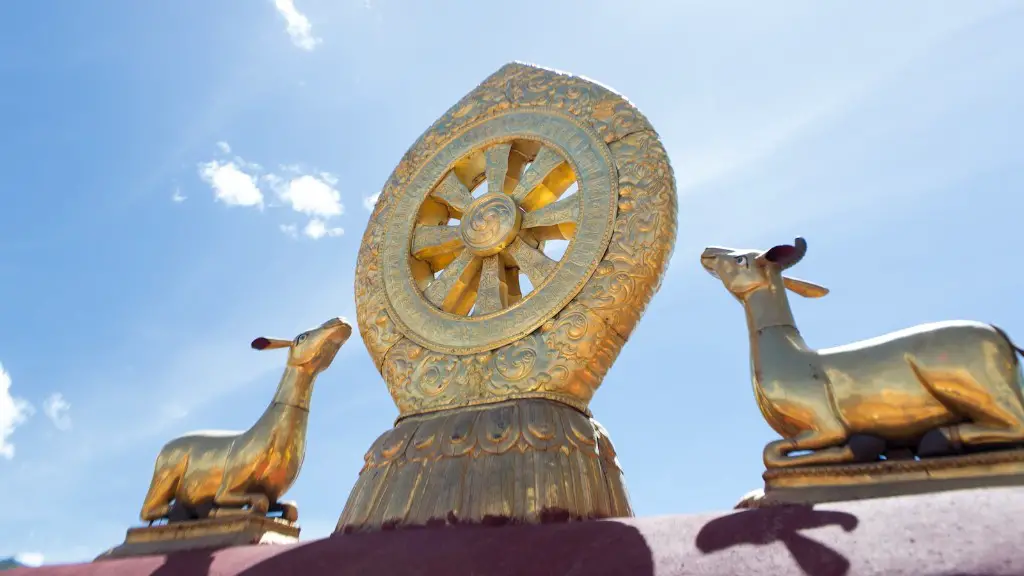Lakshmi is one of the most well-known female archetypes in Hinduism and one of the most worshiped goddesses in the Hindu pantheon. She is the consort of Vishnu, the preserver of the universe, and the symbol of wealth, fortune and material blessings. In Hinduism, Lakshmi is seen as the goddess of abundance, fertility and luck. She is often depicted in Hindu iconography as four-armed and wearing yellow robes, and is said to represent financial prosperity, spiritual knowledge and material blessings. In Hinduism, Lakshmi is personified as a female energy who plays an important role in many aspects of life. She is believed to bring about material wealth, abundance and good luck.
In many Hindu traditions, a festival known as Diwali is held in Lakshmi’s honor. During this festival, people offer prayers to Lakshmi for prosperity and well-being. This festival is seen as a time when the energy of abundance showers on the world. Many Hindus believe that if one pleases Lakshmi, the goddess will bring wealth, prosperity and good luck into one’s life.
There are many ways to worship Lakshmi, including light offerings, mantras, performing rituals, and praying to her image or her symbol, the lotus flower. In some Hindu communities, people perform rituals dedicated to Lakshmi in order to receive her blessings of abundance. During these rituals, a person is expected to take a vow that promises to behave in a certain way. For example, people can vow to use resources responsibly, help the needy and maintain a spiritually aware and disciplined life.
Hindus believe that Lakshmi is the presiding deity of marriage, seen as a sacred bond between two souls, and provides guidance in the marriage process. In some Hindu communities, it is customary for newly-wed couples to pray to Lakshmi in the morning of their first day together. This is seen as an attempt to invoke Lakshmi’s blessings of abundance and harmony in their new life together.
In some Hindu traditions, Lakshmi is seen as an embodiment of compassion, honoring and respecting all beings. She is also viewed as a mother figure who nurtures and cares for her devotees. These qualities are reflected in her many names, such as Mahalakshmi, Mahakali, Mahamaya, and Maha-Vishnu-Devi. These names embody the spirit of compassion, motherhood and nurturing.
In Hinduism, Lakshmi’s role as the goddess of wealth and fortune is closely linked to her husband, Vishnu. The two are seen as being inseparable, and Lakshmi’s prosperity is seen as being closely tied to Vishnu’s divine force. Additionally, Lakshmi is also viewed as being closely tied to the goddess Durga, who is seen as the goddess of victory in battle and the divine consort of Lord Shiva.
The connection between Lakshmi and the other gods and goddesses in the Hindu pantheon makes her one of the most widely venerated deities in Hinduism. In the Hindu view, she embodies not only financial prosperity, but also spiritual wisdom, harmony and divine grace. Through her many roles and her many names, Lakshmi stands as a powerful symbol of abundance and goodness in Hinduism.
Material Blessings
In Hinduism, Lakshmi is often seen as the source of all material goods and riches, and is associated with abundance, prosperity and financial success. Hindus believe that by worshipping her, her blessings of wealth and abundance will come. Many Hindus believe that Lakshmi can grant the material satisfaction that is sought by individuals and society alike. Lakshmi is seen as a generous goddess who blesses those who devote their lives to her with the good fortune and riches that she has to offer.
One of the most popular Hindu rituals to invoke Lakshmi’s material blessings is the Ganesh-Lakshmi puja. In this ritual, small statues of the Hindu gods Ganesha and Lakshmi are placed in a household shrine, and offerings are made to the gods. This puja is performed to seek Lakshmi’s material blessings and to honor her as a giver of abundant and fulfilling life. The puja is also seen as a way of honoring her role as a preserver of the universe.
The worshipping of Lakshmi is often seen as the gateway to a life of abundance. Hindus believe that if one has the right devotion, one’s life can be filled with material possessions, success and security. Through the worshipping of Lakshmi, Hindus hope to gain her blessings and ensure a good future.
Symbolism
In Hindu iconography and sculptures, Lakshmi is most often depicted as four-armed and wearing yellow garments, reflecting her all-encompassing nature. Her four arms symbolize her four traditional roles: providing material wealth, spiritual wisdom, ability to defeat enemies and make peace with others, and the power to grant beauty and grace. She is also often depicted holding a lotus flower, which is seen as a symbol of purity and divine grace.
Lakshmi’s popularity has led to a variety of symbols and symbols associated with her. For example, the lotus flower is seen as a symbol of purity and grace, while the swan is seen as a symbol of tranquility and beauty. In Hindu iconography, the lotus flower and the swan are often seen flanking Lakshmi, representing her purity, grace and divine presence.
In many Hindu temples, Lakshmi is often represented with her consort Vishnu, with whom she is believed to be eternally tied. This union is seen as symbolic of the eternal marriage of abundance and preservation, of which both deities are seen as representatives.
The image of Lakshmi is often used to maintain a sense of religious harmony in Hinduism. Hindus believe that Lakshmi stands for not only abundance, but also for spiritual knowledge, material blessings, and a life of purity and grace. Through her many representations and her divine wisdom, she provides guidance to her devotees and blessings to her devotees.
The Power of Prayer
Prayers and offerings to Lakshmi are seen as a way of thanking her for her generosity and grace. Through the performing of these rituals, Hindus hope to gain Lakshmi’s blessings and bring wealth, prosperity and good fortune into their lives. Many Hindus believe that if one pleases Lakshmi, she will bring good luck into one’s life and grant material wealth and spiritual insight.
Lakshmi is often invoked by Hindus when they need to draw on her energy for help. For example, a person may offer prayers to Lakshmi for help in times of financial hardship, or for protection from malicious forces. By offering prayers to Lakshmi, the person is asking her to provide help and guidance in their life. Through praying to Lakshmi, the person opens themselves up to her divine power and grace.
In Hinduism, Lakshmi is seen as a protector and benefactor who provides guidance and protection to her devotees. By offering prayers to her, people are able to draw on her power and wisdom to help in times of need. Her presence in the universe ensures that there is abundance and financial prosperity, and that people can find the spiritual insight they need to live a life of harmony and grace.
Conclusion
Lakshmi stands as one of the most revered goddesses in Hinduism. She is seen as the source of abundance and material wealth and is the provider of all good fortune. She is believed to be a compassionate mother figure who nurtures and cares for her devotees, and she is seen as a source of spiritual guidance and enlightenment. Through her various representations and her divine wisdom, Lakshmi is a powerful symbol of abundance and goodness in Hinduism.


